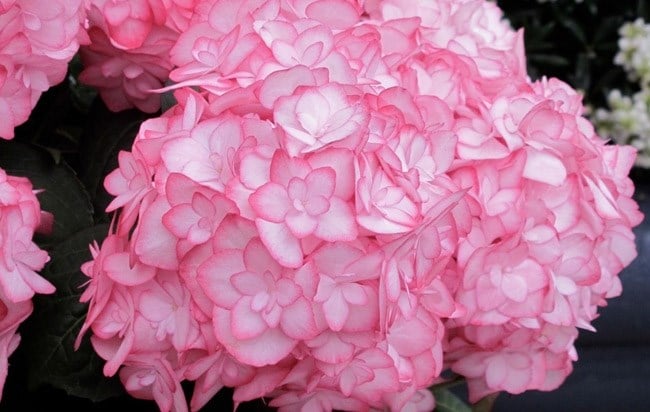| Roses and early-flowering perennials are full of flower and there is still plenty to come in August, September and October. The problem is, so many form soft mounds and, if you’re not careful, the garden can begin to look monotonous. Make sure you add verticals, with spires of Aconitums, Verbascums and Veronicastrums to link earth and sky. Create focal points too - and one of the best ways is to add a flowering shrub in a strategic position, perhaps on a corner. There are plenty that provide summer flowers and also those that shine in autumn.
Flat-topped and Glorious

Certain shrubs slot into the border with ease, partly because their flowers resemble herbaceous perennials. The elders (Sambucus) may not sound exciting, but they shouldn’t be confused with our roadside native. There are dark-leaved forms with finely cut foliage, that proffer champagne-pink flowers. Their summer flowers persist well and show up beautifully against the almost black foliage.
 Interestingly these dark-leaved elders arrived almost by accident when an East Malling researcher, Ken Tobutt, was studying gene flow in the early 1980s. He planted lots of different Sambucus, crossed them to identify dominant and recessive genes, and one black-leaved one stood out. When the experiment ended he decided it was too good to scrap. It was originally named ‘Black Beauty’, but is now officially called Sambucus nigra f.porphyrophylla 'Gerda'. There is also a closely related black elder with lacier foliage, once ‘Black Lace’ but now renamed Sambucus nigra f. porphyrophylla 'Eva'. Both have been awarded an AGM on RHS trials and both these easily grown, medium-sized shrubs provide black foliage, a great foil for their pink flowers. Interestingly these dark-leaved elders arrived almost by accident when an East Malling researcher, Ken Tobutt, was studying gene flow in the early 1980s. He planted lots of different Sambucus, crossed them to identify dominant and recessive genes, and one black-leaved one stood out. When the experiment ended he decided it was too good to scrap. It was originally named ‘Black Beauty’, but is now officially called Sambucus nigra f.porphyrophylla 'Gerda'. There is also a closely related black elder with lacier foliage, once ‘Black Lace’ but now renamed Sambucus nigra f. porphyrophylla 'Eva'. Both have been awarded an AGM on RHS trials and both these easily grown, medium-sized shrubs provide black foliage, a great foil for their pink flowers.
You can treat ornamental elders in two different ways. If you prune them hard in late-spring they develop sumptuous foliage - at the expense of flower. If you lightly prune them you get more flower heads, but the leaves are smaller. Whenever foliage is key, as it is with black-leaved elders, it’s probably wiser to prune harder for better foliage, although the flowers are highly attractive to a range of insects. Always allow two or three years for your shrub to become established before you hard prune - and that’s good advice for any plant. Let it develop a root system first.
Puffs of Smoke or Lollipop Leaves?
 Smoke bushes (forms of Cotinus coggygria) can be treated in exactly the same way. If cut back hard in late-spring they will produce much larger lollipop-shaped leaves, with fewer or even no flowers. Prune them lightly, or leave them alone, and they will make big shrubs (as wide as they are tall) that ‘smoke’ by producing airy wands of flowers that gradually disintegrate into grey tangles - hence the name. ‘Royal Purple’ is an older purple-leaved variety that could be left and, once autumn arrives, this always develops bright-pink edges to the leaves. Quite beguiling! Smoke bushes (forms of Cotinus coggygria) can be treated in exactly the same way. If cut back hard in late-spring they will produce much larger lollipop-shaped leaves, with fewer or even no flowers. Prune them lightly, or leave them alone, and they will make big shrubs (as wide as they are tall) that ‘smoke’ by producing airy wands of flowers that gradually disintegrate into grey tangles - hence the name. ‘Royal Purple’ is an older purple-leaved variety that could be left and, once autumn arrives, this always develops bright-pink edges to the leaves. Quite beguiling!
Others are principally grown for foliage and ‘Grace’ was one of five seedlings from a deliberate cross between the American chittamwood (Cotinus obovatus) and a variety of the Venetian sumac (C. coggygria `Velvet Cloak') made by Peter Dummer, propagator at Hillier's nursery, in Winchester, in the late 1970s. He named it after his wife. It turns the colour of Victorian cranberry glass in autumn, but in summer the leaves have hints of jade and gold. This vigorous hybrid puts out long wands after pruning, so it isn’t suitable for a windy, exposed site. ‘Golden Spirit’ matches its name, with golden-yellow leaves that turn to orange in autumn. Smoke bushes, or Cotinus, need a sunny warm position in order to flower and develop leaf colour. They are vigorous on rich soil, less so in poorer conditions. All come into leaf late.
More Flat-Topped Flowers
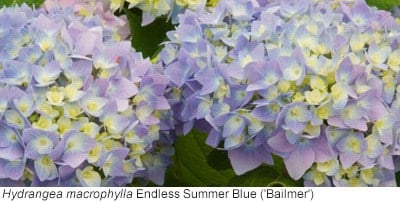
Hydrangeas come in many guises, but the blue and pink mopheads and lacecaps that flower in summer are generally forms of Hydrangea macrophylla, an Asian species that prefers lots of summer rainfall and drier winters. This can be tricky in drier gardens, but it does well in coastal gardens and in the west of the United Kingdom where winters tend to be less-severe. Most traditional varieties flower on old wood, so if this is killed every year flowers are scarce. You can create a shelter belt by planting these hydrangeas on the shadier side of a low wall. This keeps the plants warm in winter and conserves moisture in summer.
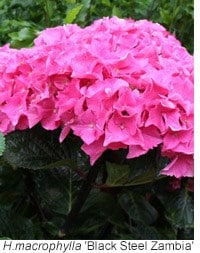 Blue flowers only appear on hydrangeas in acid conditions, but you can apply a colourant to encourage bluer blooms, or you could grow one in a pot of ericaceous compost, although you must water it with rain water not limy tap water. If you’re on acid soil ‘Endless Summer Blue’, an American variety, will flower on old and new wood, so this will perform in colder gardens too. There are black-stemmed hydrangeas, including the recent ‘Black Steel Zambia’, which produces enormous deep-pink heads. Or you could plant the intricate pink-edged white Japanese-bred double ‘Miss Saori’ winner of The RHS Plant of the Year 2014. The latter is perfect in a container and all have flowers that fade into winter, creating papery seed heads that can either be enjoyed indoors, or left in situ to fade into winter skeletons. Don't cut back until spring! Blue flowers only appear on hydrangeas in acid conditions, but you can apply a colourant to encourage bluer blooms, or you could grow one in a pot of ericaceous compost, although you must water it with rain water not limy tap water. If you’re on acid soil ‘Endless Summer Blue’, an American variety, will flower on old and new wood, so this will perform in colder gardens too. There are black-stemmed hydrangeas, including the recent ‘Black Steel Zambia’, which produces enormous deep-pink heads. Or you could plant the intricate pink-edged white Japanese-bred double ‘Miss Saori’ winner of The RHS Plant of the Year 2014. The latter is perfect in a container and all have flowers that fade into winter, creating papery seed heads that can either be enjoyed indoors, or left in situ to fade into winter skeletons. Don't cut back until spring!
Those on drier gardens could plant the American Hydrangea arborescens ‘Annabelle’ a drought tolerant, durable hydrangea with lime-green foliage and lime-green clusters of buds that look superb in early July. Domed heads of white flower follow, even in dry positions. This was discovered growing wild near Anna in Ohio in 1975, hence the name, and launched by the Gulf Stream Nursery. There is a now a pink form called ‘Invincibelle’, developed at North Carolina State University's Mountain Horticultural Crops Research Station.
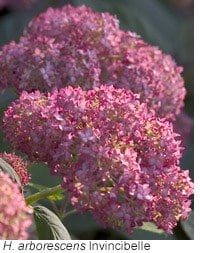 In autumn two other types of hydrangea light up shadier areas. Hydrangea paniculata produces long buddleja-like panicles rather than mopheads. There are some delicate white, lacy forms such as ‘Kyushu’ and this is the most popular with insects. ‘Tardiva’, a creamy white, is equally refined. ‘Limelight’ starts white and then develops to lime-green as it fades, with medium-sized flowers that light up shade. Or you can get massive heads, a foot long or more, and these look majestic under enormous trees. ‘Vanille Fraise’ the colour of strawberries and cream, and the white ‘Silver Dollar’ are both impressive. In autumn two other types of hydrangea light up shadier areas. Hydrangea paniculata produces long buddleja-like panicles rather than mopheads. There are some delicate white, lacy forms such as ‘Kyushu’ and this is the most popular with insects. ‘Tardiva’, a creamy white, is equally refined. ‘Limelight’ starts white and then develops to lime-green as it fades, with medium-sized flowers that light up shade. Or you can get massive heads, a foot long or more, and these look majestic under enormous trees. ‘Vanille Fraise’ the colour of strawberries and cream, and the white ‘Silver Dollar’ are both impressive.
If you have a low wall, or a large container, the floppier stemmed Hydrangea quercifolia ‘Snow Queen’ produces white conical heads against oak-shaped foliage and this colours up to red in autumn. It’s perfect for a shady corner.
Elegant Fuchsias
 Equally good in shade are hardy fuchsias and planting now will give them a good start before winter arrives. The purple and red ‘Mrs Popple’ has been around since the 1920s and was spotted at a tennis party in Stevenage by Clarence Elliot of the Six Hills Nursery, a famous alpine gardener with a notorious eye for a good plant and a searing backhand. Mrs Popple was his neighbour. This glows in August and September and makes a good partner with Japanese anemones, especially 'Pamina'. Equally good in shade are hardy fuchsias and planting now will give them a good start before winter arrives. The purple and red ‘Mrs Popple’ has been around since the 1920s and was spotted at a tennis party in Stevenage by Clarence Elliot of the Six Hills Nursery, a famous alpine gardener with a notorious eye for a good plant and a searing backhand. Mrs Popple was his neighbour. This glows in August and September and makes a good partner with Japanese anemones, especially 'Pamina'.
Or you can be subtle and plant a slender-stemmed small-flowered form to arch and sway. The pretty pink Fuchsia magellanica var. molinae should flower from July onwards and, if happy it will form a large bush. Fuchsias are left intact over winter and then, once the shoots appear their stems are cut back to the nearest growing tip. Mild winters mean earlier flowers, but after a severe winter a hardy fuchsia will shoot from the base - but perhaps not until June or July so be patient. The slender flowered ones, collected from the Magellan Strait by Philibert Commerson in 1767, are not as hardy as ‘Mrs Popple’. Surround the base with wooden twigs and pack some dry plant material close to the crown, removing it in spring because it will attract slugs.
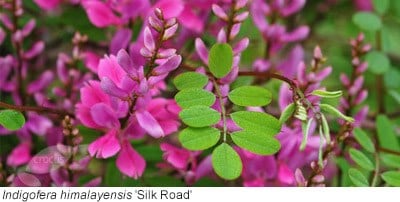
If you’ve got a sunny position in well-drained soil, the small leaves and delicate pink pea flowers of an Indigofera can be treated as the fuchsia, cosseted through winter before being cut back to the lowest shoots in spring. Indigofera himalayensis 'Silk Road’ has bright-pink flowers and bright-green leaves and the stems swoon very attractively. It can also be grown in a container.
Earlier-flowering Shrubs
 Many of the earlier-flowering shrubs make good partners for shrub roses. They tend to be in the same colour range: sometimes flowering just before and sometimes with the main flush, but often fragrantly. Abelias, Deutzias and Kolkwitzias fall into this category. Abelias flower over many weeks, but need a warm sheltered position to thrive. Given that, Abelia x grandiflora will flower over many months, the cool-pink flowers, which start appearing in June, will stand out well against the red young foliage. Deutzia x hybrida ‘Mont Rose' has purplish buds that open to pink stars in early July, or sooner depending on weather. This is smaller in stature, about a metre, so an ideal shrub for a smaller garden or container. Kolkwitzia amabilis `Pink Cloud’ makes a large roundel, roughly 3-4m high, and it is tolerant of most soil types, producing flowers in May and June on graceful branches usually before most roses. Many of the earlier-flowering shrubs make good partners for shrub roses. They tend to be in the same colour range: sometimes flowering just before and sometimes with the main flush, but often fragrantly. Abelias, Deutzias and Kolkwitzias fall into this category. Abelias flower over many weeks, but need a warm sheltered position to thrive. Given that, Abelia x grandiflora will flower over many months, the cool-pink flowers, which start appearing in June, will stand out well against the red young foliage. Deutzia x hybrida ‘Mont Rose' has purplish buds that open to pink stars in early July, or sooner depending on weather. This is smaller in stature, about a metre, so an ideal shrub for a smaller garden or container. Kolkwitzia amabilis `Pink Cloud’ makes a large roundel, roughly 3-4m high, and it is tolerant of most soil types, producing flowers in May and June on graceful branches usually before most roses.

Weigela also flower in May and June and this is one shrub that has excellent variegated forms that look healthy rather than sick. 'Florida Variegata' is a pink form with green and cream foliage, minus any hint of yellow. Or go for the new cream-yellow , with the orange throat, aptly named Weigela middendorffiana 'Mango'. Well-drained soil and bright light are required.
|
Things to do
 |

Repeat-flowering roses need their spent flowers removing and it’s wise to give them a feed using Vitax Q4 so that they produce more flowers. If you’re struggling with secateurs, opt for a pair for life and invest in some Felcos. No 6 is a good size for light pruning.
|
 |
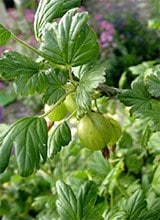 If you’re growing gooseberries or redcurrants, after you’ve picked your fruit, shorten the side shoots back to three or five leaves.
|
 |
 If the weather is dry and hot, keep any new purchases in a cool place. Water them and then plant them when the weather changes - as it surely will. Keep newly planted things watered in warm weather, preferably before they wilt.
|
 |

Add some vertical presence by planting an agapanthus. ‘Black Panther’ is a deep-blue that emerges from black buds. ‘Megan’s Mauve’ is a subtle gloaming shade that shines in evening light. They’ll both provide linear leaves and shades of blue to counteract the many yellows set to explode in the late-summer borders. It’s a myth that you starve them: feed them and water them. South Africa gets rainfall in abundance at times. Plant in pots or a garden hotspot, but they need bright light.
|
 |

Still time to sow carrots and peas. Water the drills though, if it’s dry. Carrot ‘Early Nantes’, a fast-maturer, and pea ‘Hurst Greenshaft’, an old variety, still can’t be beaten! |
|
|
Essential Kit for July

Gold leaf tough touch gloves
£26.99

Terracotta arc pots
from £44.99
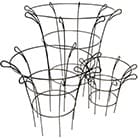
Fluted plant support
from £29.99

Bypass secateurs
was £16.99 now £9.99
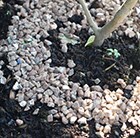
Natural slug and snail deterrent
was £4.99 now £3.99
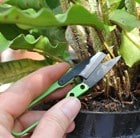
Dead headers
was £4.49 now £3.49
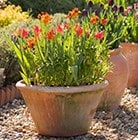
Terracotta lucca pot
from £29.99
|
|



